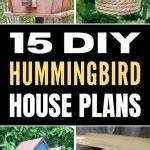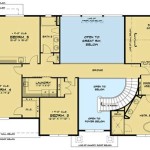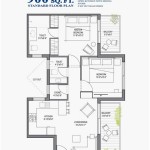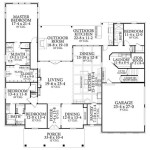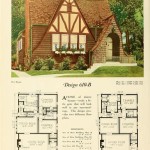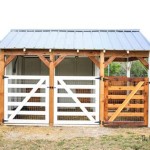Mountain cabin house plans provide a blueprint for constructing a secluded dwelling nestled amidst breathtaking natural surroundings. These plans cater to the unique needs of mountain living, seamlessly integrating comfort and functionality with the rugged beauty of the wilderness.
From cozy A-frame cabins perched on hillsides to sprawling lodges with expansive views, mountain cabin house plans offer a diverse range of designs to suit different preferences and lifestyles. Whether you seek a rustic retreat for weekend getaways or a permanent sanctuary away from the hustle and bustle, these plans provide a solid foundation for creating your dream mountain abode.
As we delve into the world of mountain cabin house plans, let’s explore the key considerations, design elements, and practical aspects that will help you navigate the planning and construction process successfully.
When planning your mountain cabin, consider these 10 key points:
- Location and views
- Size and layout
- Materials and durability
- Energy efficiency
- Water and sanitation
- Heating and cooling
- Storage and organization
- Outdoor living spaces
- Cost and budget
- Local building codes
These factors will help ensure that your mountain cabin meets your needs and provides a comfortable and enjoyable living experience.
Location and views
The location of your mountain cabin will have a significant impact on its overall design, ambiance, and value. Consider the following factors when choosing a building site:
- Accessibility: How easy is it to reach the site? Will you need to build a long driveway or road? Is the site accessible year-round, or will it be cut off during certain seasons?
- Views: What are the views like from the site? Are there any scenic vistas, mountains, or bodies of water that you can take advantage of? Consider the orientation of the site to maximize natural light and solar gain.
- Privacy: How private is the site? Are there any neighboring properties or roads that could impact your privacy? Consider the placement of your cabin and the use of landscaping to create a sense of seclusion.
- Natural features: Are there any natural features on the site that could be incorporated into the design of your cabin? For example, a large rock outcropping could be used as a foundation or a backdrop for a fireplace.
Once you have considered these factors, you can begin to narrow down your options and choose the perfect location for your mountain cabin. The ideal site will offer a combination of accessibility, privacy, stunning views, and unique natural features that will enhance your living experience.
Size and layout
The size and layout of your mountain cabin will depend on a number of factors, including the number of people who will be using it, the frequency of use, and your budget. A small cabin may be suitable for a couple or a single person, while a larger cabin will be needed for a family or group of friends. If you plan to use the cabin frequently, you may want to consider a larger cabin with more amenities. However, a larger cabin will also be more expensive to build and maintain.
The layout of your cabin should be designed to maximize space and functionality. A well-designed cabin will have a comfortable living area, a well-equipped kitchen, and a private sleeping area. You may also want to include a loft or a screened porch to take advantage of the views. If you plan to use the cabin year-round, you will need to include a mudroom or entryway to help keep the cold and snow out of the living space.
When designing the layout of your cabin, be sure to consider the following factors:
- Traffic flow: The layout should allow for easy movement between different areas of the cabin, without any bottlenecks or awkward transitions.
- Natural light: Position windows and doors to take advantage of natural light and create a bright and airy interior.
- Views: If there are any scenic views from the site, be sure to orient the cabin to take advantage of them.
- Privacy: The layout should provide privacy for different areas of the cabin, such as the sleeping area and the bathroom.
By carefully considering the size and layout of your mountain cabin, you can create a space that is both comfortable and functional, and that meets your specific needs.
Materials and durability
The materials you choose for your mountain cabin will have a significant impact on its durability and longevity. In a harsh mountain environment, it is important to choose materials that can withstand the elements and provide adequate insulation. Here are some key considerations when choosing materials for your mountain cabin:
Exterior walls: The exterior walls of your cabin should be made of a durable material that can withstand the elements, such as wood, stone, or brick. Wood is a popular choice for mountain cabins because it is relatively inexpensive, easy to work with, and provides good insulation. However, wood is also susceptible to rot and insects, so it is important to choose a wood species that is resistant to these problems. Stone and brick are more durable than wood, but they are also more expensive and difficult to work with.
Roofing: The roof of your cabin should be made of a durable material that can withstand snow, rain, and wind. Asphalt shingles are a popular choice for mountain cabins because they are relatively inexpensive and easy to install. However, asphalt shingles can be damaged by hail and high winds. Metal roofing is a more durable option, but it is also more expensive. Tile roofing is the most durable option, but it is also the most expensive.
Windows and doors: The windows and doors of your cabin should be made of a durable material that can withstand the elements. Vinyl windows and doors are a popular choice for mountain cabins because they are relatively inexpensive and easy to maintain. However, vinyl windows and doors can be damaged by hail and high winds. Wood windows and doors are more durable than vinyl, but they are also more expensive and require more maintenance. Fiberglass windows and doors are the most durable option, but they are also the most expensive.
Energy efficiency
Energy efficiency is an important consideration for any home, but it is especially important for mountain cabins. Mountain cabins are often located in remote areas where access to electricity and other utilities can be limited. Even if your cabin is connected to the grid, you may still want to consider energy-efficient measures to reduce your energy costs and environmental impact.
There are a number of ways to improve the energy efficiency of your mountain cabin. Here are a few key strategies:
- Insulation: Insulation is one of the most important factors in determining the energy efficiency of your cabin. Good insulation will help to keep your cabin warm in the winter and cool in the summer, reducing your heating and cooling costs. Be sure to insulate your walls, roof, and floor to the maximum extent possible.
- Windows and doors: Windows and doors are another major source of heat loss in a cabin. Choose energy-efficient windows and doors that are well-insulated and airtight. Look for windows and doors that have a high Energy Star rating.
- Heating and cooling: Choose energy-efficient heating and cooling systems for your cabin. A wood stove or fireplace can be a good option for heating a small cabin, while a heat pump or mini-split system may be a better choice for a larger cabin. Be sure to size your heating and cooling systems appropriately for the size of your cabin.
- Appliances: Choose energy-efficient appliances for your cabin. Look for appliances that have a high Energy Star rating. Energy-efficient appliances will use less energy to operate, saving you money on your energy bills.
By implementing these energy-efficient measures, you can reduce the energy consumption of your mountain cabin and make it more comfortable and affordable to live in.
In addition to the strategies listed above, there are a number of other things you can do to improve the energy efficiency of your mountain cabin. These include:
- Use natural light: Natural light is a great way to reduce your energy consumption. Open your curtains and blinds during the day to let in natural light. You can also use skylights to bring natural light into your cabin.
- Unplug electronics: When you’re not using electronics, unplug them from the outlet. This will help to reduce your standby power consumption.
- Turn off lights: When you leave a room, turn off the lights. This may seem like a small thing, but it can make a big difference over time.
- Be mindful of your water usage: Water heating can account for a significant portion of your energy consumption. Be mindful of your water usage and take shorter showers and wash clothes in cold water.
By following these tips, you can improve the energy efficiency of your mountain cabin and make it a more comfortable and affordable place to live.
Water and sanitation
Access to clean water and adequate sanitation is essential for any home, but it can be a challenge in remote mountain areas. When planning your mountain cabin, you will need to carefully consider how you will obtain water and dispose of wastewater.
There are a number of options for obtaining water for your mountain cabin. One option is to drill a well. This is a good option if there is groundwater available on your property. However, drilling a well can be expensive, and there is no guarantee that you will find water. Another option is to collect rainwater. This is a good option if you live in an area with a lot of rainfall. However, you will need to have a large storage tank to collect the rainwater, and you will need to treat the water before drinking it. A third option is to haul water from a nearby source. This is a good option if you live near a river or stream. However, hauling water can be time-consuming and expensive.
Once you have obtained water for your cabin, you will need to consider how you will dispose of wastewater. One option is to install a septic system. This is a good option if your cabin is located on a large lot. However, septic systems can be expensive to install and maintain. Another option is to use a composting toilet. This is a good option for small cabins and cabins that are located in remote areas. Composting toilets are relatively inexpensive to install and maintain, and they do not require a lot of water.
No matter which water and sanitation system you choose, it is important to make sure that it is properly installed and maintained. This will help to ensure that you have a safe and reliable supply of water and that your wastewater is disposed of properly.
Heating and cooling
Heating and cooling your mountain cabin can be a challenge, especially if you live in an area with extreme temperatures. However, there are a number of different heating and cooling options available, so you can find a system that meets your needs and budget.
Wood stoves and fireplaces: Wood stoves and fireplaces are a popular choice for heating mountain cabins. They are relatively inexpensive to install and operate, and they can provide a cozy and inviting atmosphere. However, wood stoves and fireplaces can also be dangerous if they are not properly installed and maintained. Be sure to have your wood stove or fireplace inspected by a qualified professional before using it.
Heat pumps: Heat pumps are a more efficient option for heating and cooling your mountain cabin. They work by transferring heat from the outside air to the inside air in the winter, and from the inside air to the outside air in the summer. Heat pumps are more expensive to install than wood stoves and fireplaces, but they can save you money on your energy bills in the long run.
Mini-split systems: Mini-split systems are a good option for heating and cooling individual rooms or small cabins. They consist of an outdoor unit and one or more indoor units. Mini-split systems are more expensive to install than window air conditioners, but they are more efficient and quieter.
Storage and organization
Storage and organization are important considerations for any home, but they are especially important for mountain cabins. Mountain cabins are often located in remote areas, so it is important to have a place to store all of your belongings and supplies. Additionally, mountain cabins are often used for a variety of activities, so it is important to have a place to store all of your gear. Here are a few tips for maximizing storage and organization in your mountain cabin:
Use vertical space: Vertical space is often underutilized in mountain cabins. Install shelves and cabinets on the walls to store items that you don’t use on a regular basis. You can also use stackable bins and baskets to store items in closets and under beds.
Utilize unused spaces: There are often unused spaces in mountain cabins, such as under eaves and in lofts. These spaces can be used to store items that you don’t need to access on a regular basis. You can install shelves or hang baskets in these spaces to create additional storage.
Choose furniture with built-in storage: Furniture with built-in storage is a great way to maximize space in your mountain cabin. Look for beds with drawers, ottomans with storage compartments, and coffee tables with shelves. These pieces of furniture will help you to store your belongings without taking up valuable floor space.
Keep frequently used items within reach: Make sure that items that you use on a regular basis are within reach. This will help you to stay organized and avoid wasting time looking for things.
Declutter regularly: It is important to declutter your mountain cabin regularly to keep it organized and free of unnecessary items. Get rid of anything that you don’t use or need. You can donate unwanted items to charity or sell them online.
By following these tips, you can maximize storage and organization in your mountain cabin. This will help you to keep your cabin organized and tidy, and it will make it easier to find the things you need.
Outdoor living spaces
Outdoor living spaces are an essential part of any mountain cabin. They provide a place to relax and enjoy the beautiful scenery, and they can also be used for cooking, dining, and entertaining. When planning your mountain cabin, be sure to include plenty of space for outdoor living.
There are many different types of outdoor living spaces that you can create. Here are a few ideas:
- Decks and patios: Decks and patios are a great way to add outdoor living space to your mountain cabin. They can be used for cooking, dining, entertaining, or simply relaxing. Decks are typically made of wood, while patios are typically made of concrete or pavers. Decks can create more of a secluded, private space. Patios work well when you want a more open, expansive feel. Both decks and patios can be customized to fit your specific needs and preferences.
- Porches: Porches are another great way to add outdoor living space to your mountain cabin. They are typically covered, which makes them a great place to relax and enjoy the outdoors even when the weather is bad. Porches can be screened in to keep out insects, which also makes them a great place to sleep on warm summer nights.
- Fire pits: Fire pits are a great way to add warmth and ambiance to your outdoor living space. They can be used for cooking, roasting marshmallows, or simply gathering around to tell stories. Fire pits can be made of a variety of materials, such as stone, brick, or metal.
- Outdoor kitchens: Outdoor kitchens are a great way to enjoy cooking and dining outdoors. They can be simple or elaborate, depending on your needs and budget. Outdoor kitchens typically include a grill, a sink, and a refrigerator. Some outdoor kitchens also include a pizza oven or a smoker.
No matter what type of outdoor living space you choose, be sure to make it comfortable and inviting. Use comfortable furniture, add some plants, and hang some lights to create a warm and welcoming atmosphere.
Outdoor living spaces are a great way to enjoy the beauty of the mountains and to create lasting memories with family and friends.
Cost and budget
The cost of building a mountain cabin can vary widely depending on a number of factors, including the size of the cabin, the materials used, the complexity of the design, and the location of the property. However, there are some general guidelines that you can follow to estimate the cost of your project.
The first step is to determine the size of your cabin. A small cabin of around 500 square feet will typically cost less to build than a large cabin of 2,000 square feet or more. The cost per square foot will also vary depending on the materials used. A cabin built with logs will typically cost more per square foot than a cabin built with wood frame.
The complexity of the design will also affect the cost of your cabin. A cabin with a simple design will be less expensive to build than a cabin with a complex design. For example, a cabin with a vaulted ceiling will cost more to build than a cabin with a flat ceiling.
Finally, the location of your property will also affect the cost of your cabin. If your property is located in a remote area, it will be more expensive to build a cabin than if your property is located in a more accessible area.
Once you have considered all of these factors, you can start to develop a budget for your project. It is important to be realistic about your budget and to factor in all of the costs associated with building a cabin, including the cost of materials, labor, and permits.
Local building codes
Before you start building your mountain cabin, it is important to check the local building codes. Building codes are regulations that govern the construction of buildings and other structures. They are designed to ensure that buildings are safe and habitable, and they vary from place to place. In some areas, building codes are very strict, while in other areas they are more lenient.
It is important to check the local building codes before you start building your mountain cabin because they will affect the design and construction of your cabin. For example, some building codes may require you to use certain materials or to build your cabin to a certain height. Other building codes may require you to install certain safety features, such as smoke detectors and fire extinguishers.
- Setbacks
Setbacks are the minimum distances that a building must be set back from property lines and other structures. Setbacks are in place to ensure that buildings are not too close together and to provide access for emergency vehicles. - Height restrictions
Height restrictions limit the height of buildings. Height restrictions are in place to protect the views of neighboring properties and to prevent buildings from becoming too tall and unstable. - Fire safety requirements
Fire safety requirements are designed to prevent fires and to protect people in the event of a fire. Fire safety requirements may include requirements for the installation of smoke detectors, fire extinguishers, and sprinkler systems. - Energy efficiency requirements
Energy efficiency requirements are designed to reduce the amount of energy that a building uses. Energy efficiency requirements may include requirements for the installation of energy-efficient appliances and insulation.
By checking the local building codes before you start building your mountain cabin, you can avoid costly mistakes and ensure that your cabin is safe and habitable.










Related Posts

